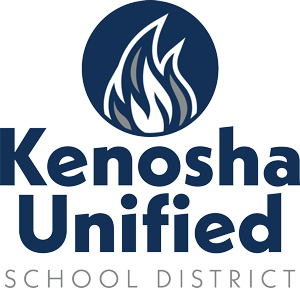Fifth Grade Academics

English Language Arts
Standards
- Wisconsin English Language Arts Standards (Revised 2020)
Resources
Fifth Grade Units
| Quarter 1 | Quarter 2 | Quarter 3 | Quarter 4 | |
| Reading | Launching Workshop: Analyzing Interpretation and Themes Through Realistic Fiction | Tackling Text Complexity: Moving Up Levels
of Nonfiction Return to Fiction: Teacher’s Choice |
Study of Author’s Perspective in Nonfiction: Argument and Advocacy | Study of Fantasy |
| Writing | Personal Narrative | Informational Writing | Research-Based Argument | Personal Essay: Memoir |
| Phonics | Word Study Unit 1 | Word Study Unit 2 | Word Study Unit 3 | Word Study Unit 4 |
Parent Resources for ELA
- RAZ Information for Families
Your child has access to an award winning literacy resource. Click on this link to learn more about Raz Plus from Learning A-Z! - Act 20 Resources & Family Activities
Math
Standards
- Wisconsin Math Standards (revised 2020)
Resources
Resources
Fifth Grade Units
| Quarter 1 | Quarter 2 | Quarter 3 | Quarter 4 |
| Unit 1: Expressions, Equations & Volume (Parent Letter: English, Spanish) | Unit 3: Place Value & Decimals | Unit 5: Multiplying & Dividing Fractions (Parent Letter: English, Spanish) | Unit 7: Division & Decimals |
| Unit 2: Adding & Subtracting Fractions (Parent Letter: English, Spanish) | Unit 4: Multiplying & Dividing Whole Numbers & Decimals (Parent Letter: English, Spanish) | Unit 6: Graphing, Geometry & Volume (Parent Letter: English, Spanish) | Unit 8: Solar Design (Parent Letter: English, Spanish) |
| Please contact your child’s teacher for more information on specific learning targets, other resources used, or other ways to help your child learn. | |||
Parent Resources
- Math at Home – collection of activities, organized by mathematical content, uses familiar routines that can be used by students and families.
- Math Apps – free apps that are based on the visual models student use in Bridges in Mathematics
Social Studies
Standards
Wisconsin Social Studies Standards
Fifth Grade Units
| Quarter 1 | Quarter 2 | Quarter 3 | Quarter 4 |
| Early Americans Meet Explorers | Settling the Colonies | Revolution Leads to a New Nation | Heading West Before |
| Please contact your child’s teacher for more information on specific learning targets, other resources used, or other ways to help your child learn. | |||
Science
Standards
Fifth Grade Units
| Quarter 1 | Quarter 2 | Quarter 3 | Quarter 4 |
| Patterns of Earth & Sky: Analyzing Stars on Ancient Artifacts | Modeling Matter: The Chemistry of Food | The Earth System: Investigating Water Shortages | Ecosystem Restoration: Matter and Energy in a Rainforest |
| Please contact your child’s teacher for more information on specific learning targets, other resources used, or other ways to help your child learn. | |||
Social Emotional Learning
Social-Emotional Learning (SEL) helps children develop the skills they need to succeed in school and in life. These include:
- Understanding and managing emotions
- Making responsible decisions
- Showing empathy and kindness
- Building positive friendships
- Solving problems in peaceful ways
SEL supports the whole child—academically, socially, and emotionally—helping students feel safe, confident, and ready to learn.
Elementary school is a time when children are learning how to navigate the world around them. As they grow, they begin to understand themselves, others, and how to work together. SEL helps students:
- Develop self-confidence and independence
- Learn how to handle big emotions
- Build friendships and resolve conflicts
- Follow directions and stay focused in class
- Create a strong sense of belonging at school
When students feel supported socially and emotionally, they are more engaged in learning and better prepared for future academic success.
KUSD uses the Second Step Elementary program, a trusted, research-based curriculum that teaches SEL skills in a developmentally appropriate and engaging way. Second Step lessons are taught in the elementary classroom and focus on:
- Skills for Learning – Listening, focusing attention, and being assertive
- Empathy – Understanding and caring about others’ feelings
- Emotion Management – Recognizing strong emotions and calming down
- Problem-Solving – Using step-by-step strategies to make good choices
Lessons include stories, songs, discussions, games, and role-playing to help students practice their skills in fun and meaningful ways.
Music
All K-5 students in the Kenosha Unified School District participate in general music for 45 minutes per week.
Fifth Grade Learning Objectives for Music
Demonstrate and apply the following concepts:
- All previously learned rhythm patterns
- Treble clef notation
Apply previously learned music reading skills to create personal music.
Experience and interact with the following:
- Rhythm
- 6/8 rhythm patterns
- Syncopation
- Tonality
- Major vs. minor
- Pentatonic scale
- Blues scale
- Harmony
- Major and minor chords
- Consonance and dissonance
- 12-bar blues
- Chromatic scale
- Accidentals (natural, sharp and flat)
Demonstrated Vocal Skills
- Sing accurately in head voice, with or without accompaniment.
- Perform a variety of songs including rounds, partner songs, two-part songs, and speech pieces.
- Vocal improvisation.
Demonstrated Instrumental Skills
- Perform pulse, rhythm, and melodies on classroom percussion instruments.
- Improvise an original rhythm/melody/tune.
Demonstrated Performance Skills
- Follow the cues of a conductor with regard to nuance
- Perform various dynamics and tempi.
- Perform with an ensemble.
Demonstrated Interaction with Music
- Dynamics
- Tempo
- Timbre
- Creatively move to music.
- Identify the expressive intent of music.
- Identify characteristics of various styles/genres of music.
Art
All K-5 students in the Kenosha Unified School District participate in art for 45 minutes per week.
Fifth Grade learning Objectives for Visual Art
Elements and Principles of Art
- Line
- Explores line drawing styles and techniques such as: Contour Drawing, Cartooning, Observational drawing, Pointillism, and Cross Hatching.
- Color
- Understands and uses basic complementary colors – Red/green, Blue/orange, Yellow/purple.
- Texture
- Uses and creates real and implied texture within artwork.
- Contrast– difference between elements in an artwork.
Artistic Process
- Identifies and demonstrates diverse methods of artistic investigation to choose an approach for beginning a work of art.
- Experiments and develops skills in multiple art-making techniques and approaches through practice. (Including 2D and 3D materials).
Craftsmanship
- Pursues quality craftsmanship through composition and use of materials.
- Evaluates and chooses artwork that demonstrates quality craftsmanship.
Responding
- Recognizes differences in criteria used to evaluate works of art depending on styles, genres, and media as well as historical and cultural contexts.
Connecting
- Identifies how art is used to inform or change beliefs, values, or behaviors of an individual or society.
- Creates artwork that represents your personal identity.
Contact Information
Mary Hoover
Coordinator of Elementary ELA & Social Studies
mhoover@kusd.edu
262-359-6311
Stacy Cortez
Coordinator of Elementary Math and Science
scortez@kusd.edu
262-359-7544
Scott Plank
Coordinator of Fine Arts
splank@kusd.edu
262-359-6389
Christine O’Regan
Coordinator of Library Media & Instructional Technology
coregan@kusd.edu
262-359-7444
Bryan Mogensen
Coordinator of Athletics/Physical Education
bmogense@kusd.edu
262-359-6384
Laura Stone
Coordinator of Student Support
lstone@kusd.edu
262-359-2492
